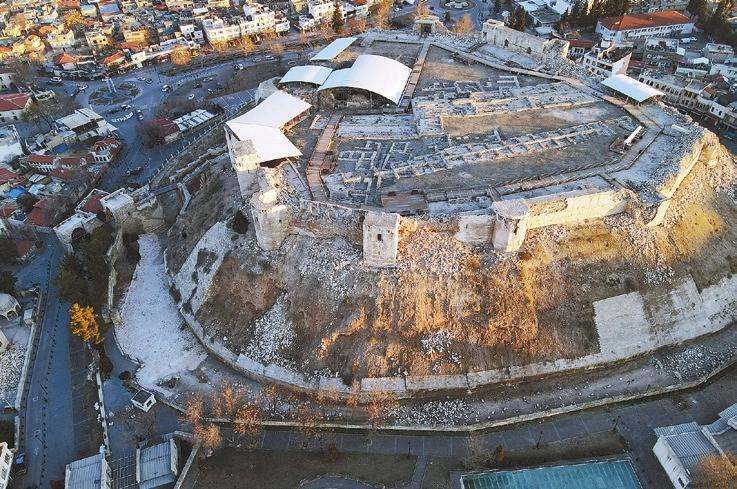

THE catastrophic earthquakes that rocked Türkiye and Syria on Feb. 6 not only led to huge human casualties but also heavily damaged the cultural memory of a region famous for its rich history. Many ancient heritage sites have been destroyed in the disaster, including Arslantepe Mound, Mount Nemrut, Göbekli Tepe, Ancient Villages of Northern Syria and Ancient City of Aleppo. The Roman-era Gaziantep Castle in Türkiye is a 2,000-year-old monument that used to be a prized cultural and tourist landmark of Gaziantep City. The stone hilltop castle’s east, south and southeast bastions entirely collapsed in the disaster, leaving debris scattered on the road. The nearby Sirvani Mosque, dating back to the 17th century, partially collapsed too. Gaziantep Castle was first built as a watchtower in the Roman period in the second and third centuries and expanded over time. It took its current form during the reign of Byzantine Emperor Justinian (527-565). Most recently, it served as the Gaziantep Defense and Heroism Panoramic Museum. The museum, tucked into the walls of the castle, remembers the 1920 defense of the city against the French. “An important part of the collective memory is now gone; it’s a shame. The destroyed sites are part of our history,” said Mahmut Erdil, a native photographer. Last week, UNESCO said in a statement that it would provide support to the damaged World Heritage sites in Türkiye and neighboring Syria, a swathe of land considered the cradle of civilization and home to some major antique sites. UNESCO’s experts, with the cooperation of national authorities, are trying to establish a precise inventory of the damage to sites on the World Heritage List. UNESCO warned about the damage to other World Heritage sites in Türkiye, including the famous archaeological site of Mount Nemrut. Located in quake-hit Adiyaman Province, the site, with giant statues as part of an ancient royal tomb from the first century, is one of Türkiye’s most iconic attractions. In Diyarbakir Province, an important center for the Roman, Sassanid, Byzantine, Islamic and Ottoman periods, several buildings at the Diyarbakir Fortress and the adjacent Hevsel Gardens have also suffered damage, the local press said. The Turkish Culture and Tourism Ministry also reported “some damage” at the Hatay Archeology Museum, considered by experts as home to the most extensive mosaic collection in Hatay Province. Antakya, known as Antioch in ancient times as a hub of civilization, commerce and religion for Christians especially, suffered widespread damage too. In Syria’s Ancient City of Aleppo, which is on the List of World Heritage in Danger, significant damages had been noted in the citadel, UNESCO said. The western tower of the old city wall had collapsed, and several buildings in the souks had been weakened. As international charities and non-government organizations work tirelessly to provide support in the region, many in the art world have joined forces to rally their own industry, fighting to raise awareness and funds for the disaster. Art Dubai in the UAE announced that it will be donating half of the online ticket revenue from its coming March event to support earthquake relief efforts in Syria and Türkiye. “This is clearly an evolving situation and we want to make sure that the money has the maximum possible impact for those who will need it most,” said Benedetta Ghione, Art Dubai’s executive director. Joining a chorus of support, British nonprofit creative platform Open Space Contemporary has organized an online art sale to raise vital funds for the earthquake appeal in the wake of the disaster, with artworks available for purchase in exchange for proof of a donation to one of several aid organizations, such as the British Red Cross and the Türkiye-based charity Ahbap. “So far, the artists have raised £7,500 (US$9,117) and will keep the sale going until they have raised £15,000, after which time they plan to look into other long-term fundraising approaches,” the organizer revealed on Instagram.(SD-Xinhua) | 
